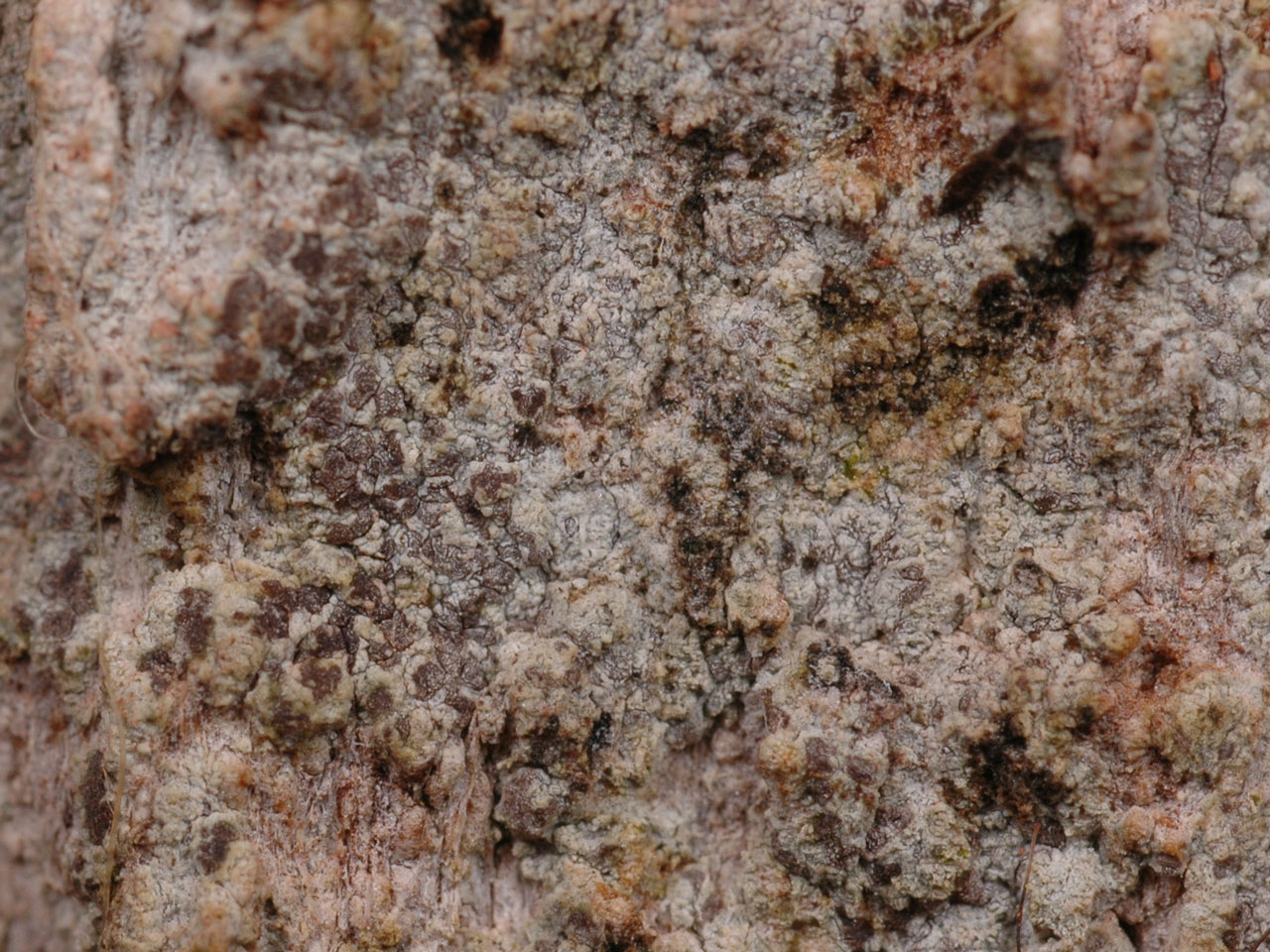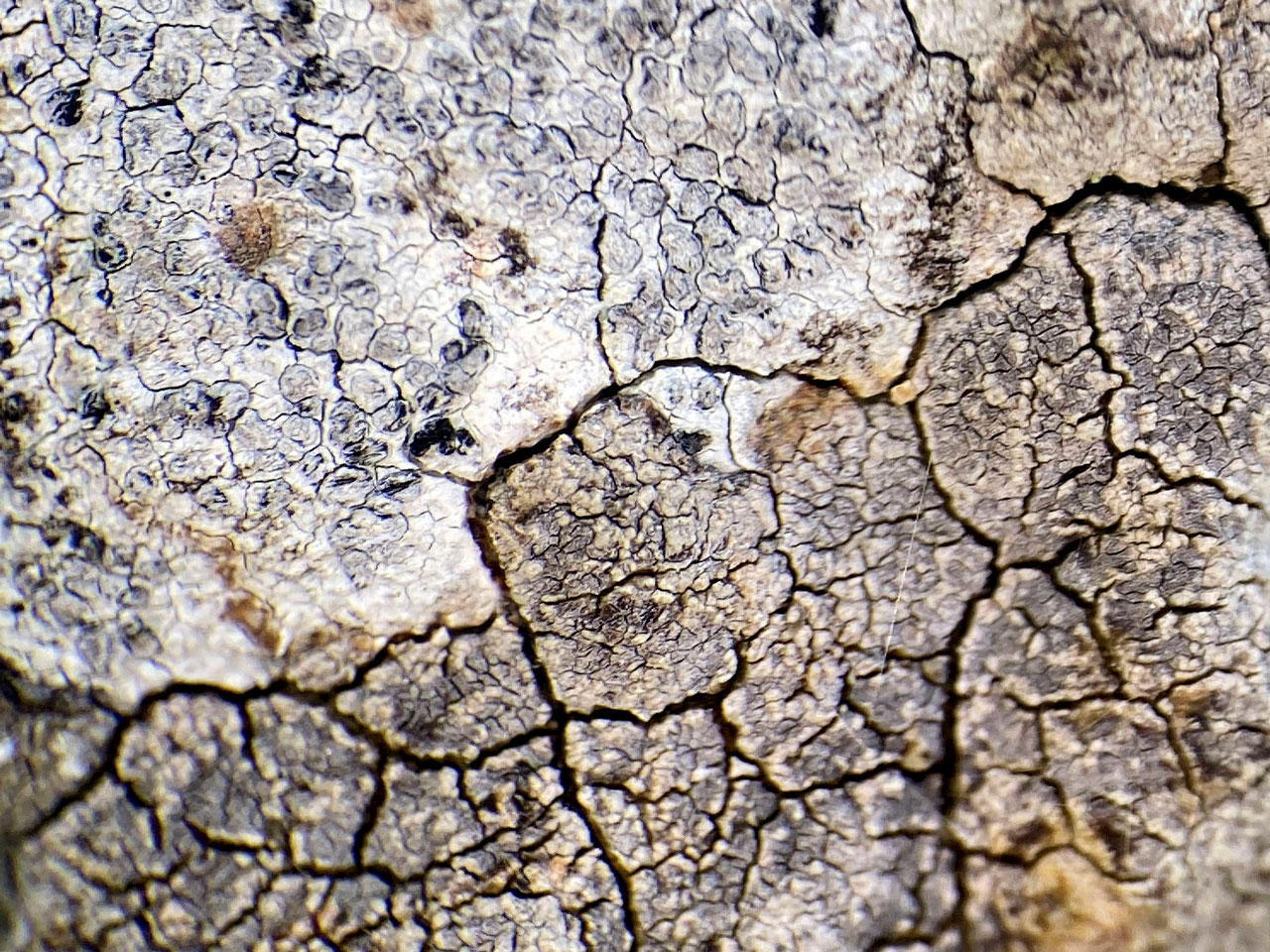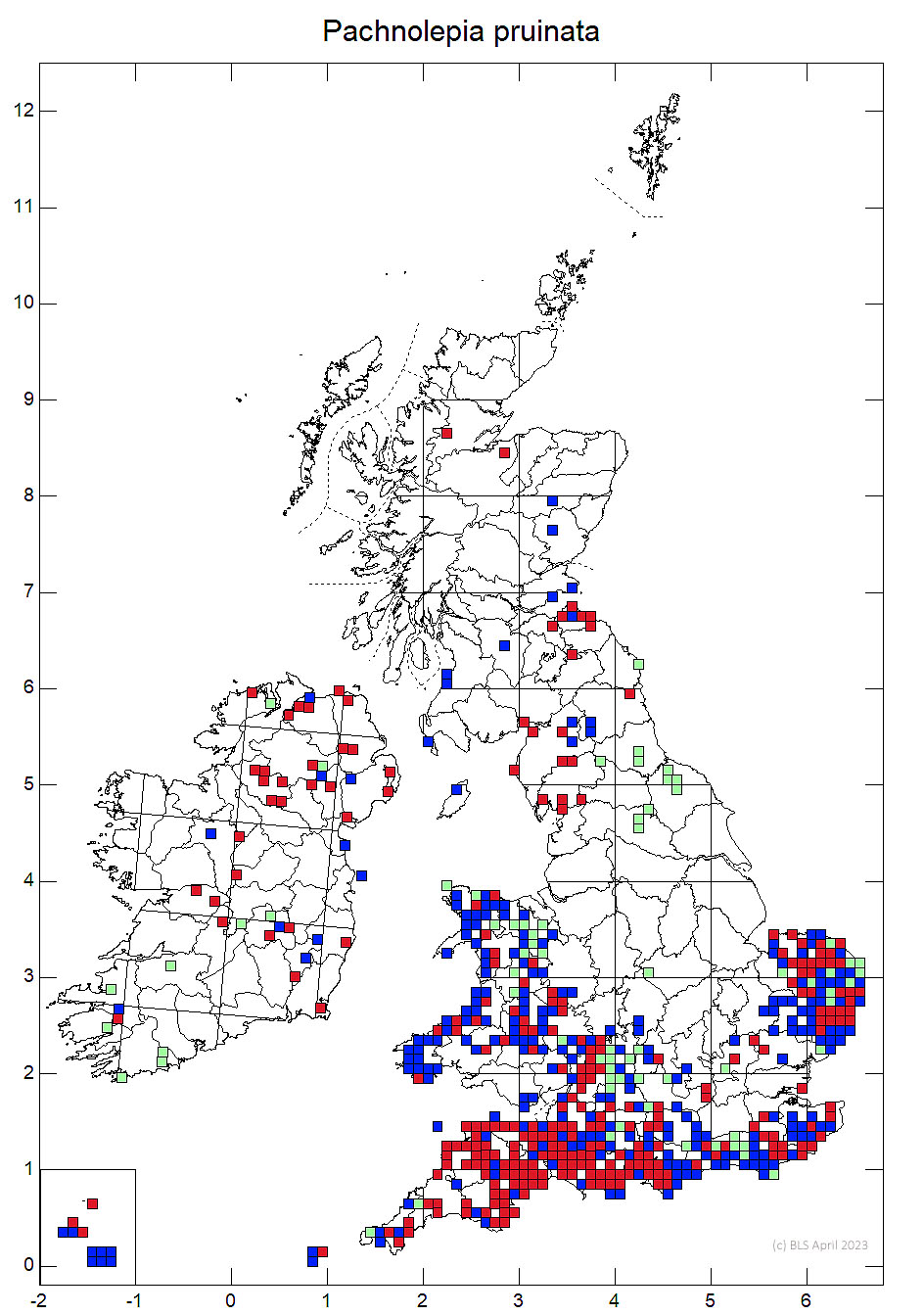This lichen is often not immediately spotted, even although in can cover large areas of bark; the thallus is a rather bark coloured pale grey or pale brown with the rounded or angular apothecia also obscured by thick white pruina. Once spotted, however, a small dab of C produces a strong C+ red reaction and the combination is distinctive. Found on rain-sheltered, dry bark of tree trunks in nutrient-enriched situations in the south of Britain, rare in Ireland. Dominates the dry sides of trees in areas with high levels of ammonia, but occurs in more mixed communities in less polluted environments.
Thallus effuse and often wide-spreading, white to pale grey or pale brown, matt or powdery, rimose-cracked and 0.1–0.3 mm thick but sometimes warty and to 1 mm thick. Apothecia to 1 mm diam., rounded or angular, sometimes elongate or substellate, immersed, pink to dark brown but usually thickly white-pruinose and hence inconspicuous when dry; in section 100–250 (–250) μm tall; epithecium red-brown, K+ grey or pale green; hymenium 40–60 μm tall, colourless; hypothecium 45–85 (–170) μm tall, colourless; paraphysoids numerous, 1–1.8 μm diam., in the epithecium often with brown walls and to 2.5 μm diam. Ascospores 13–22 × 4.5–7 μm, (3–) 4–5-septate, cylindric-obovoid, the apical cell not enlarged, colourless, old ascospores apparently never brown. Pycnidia 100–200 μm diam., rare, ± immersed, pale or red-brown, internally convoluted, the wall colourless or pale red-brown (K+ pale green); conidia 10–16 × 0.5 μm, short thread-like, usually curved. Thallus and apothecia pruina C+ red, K–, Pd–, UV– (arthoniaic acid).
Distinguished from species of Arthonia on bark with pruinose apothecia by the C+ red reaction. A. anglica apothecia are not pruinose, stellate and only C+ red in section, and the ascospores have enlarged apical cells. P. pruinata has been claimed to resemble and often grows with Dendrographa decolorans in the field, but that species is nearly always sterile in Britain, sorediate and C–. It has also been misidentified as Lecanographa lyncea, which can look similar when in poor condition, but this is C–.
Sometimes acts as a host for Milospium graphideorum.
On rain-sheltered, dry bark of tree trunks in nutrient-enriched situations, especially Maple species, Ash and Oak, often dominating the side of the tree, rarely on wooden boards and dry stonework; frequent. Communities dominated by this species are referred to the Nutrient Rich Dry Bark Community (Arthonietum impolitae). Observations suggest that the Arthonietum impolitae can displace more diverse communities of conservation importance referable to the Ancient Dry Bark Community (Lecanactidetum premneae) where ammonia levels are excessive. Pachnolepia pruinata can also occur as a component of the Lecanactidetum premneae on parkland veteran trees in areas with elevated but not excessive ammonia levels, but is very rare the same community within woodlands in clean areas.

South Britain extending locally to S. Aberdeenshire. Uncommon and eastern in Ireland.
A rare species in Ireland, reflecting the localised distribution of old trees in the general countryside there.
Cannon, P., Ertz, D., Frisch, A., Aptroot, A., Chambers, S., Coppins, B. J., Sanderson, N. A., Simkin, J. & Wolseley, P. (2020) Arthoniales: Arthoniaceae, including the genera Arthonia, Arthothelium, Briancoppinsia,Bryostigma, Coniocarpon, Diarthonis, Inoderma, Naevia, Pachnolepia, Reichlingia, Snippocia, Sporodophoron, Synarthonia and Tylophoron. Revisions of British and Irish Lichens 1: 1 - 48
Text by Neil A Sanderson, based on Cannon et al (2020)



